
| Gallery | The Mall | Member Directory | MHA News | Bookstore | Library | Links |
See also,
2004 Photo Report
Cob Oven Workshop with Tom Trout
Soapstone Heater Workshop with Rod Zander
Hardware Fabrication Workshop with Willliam Davenport
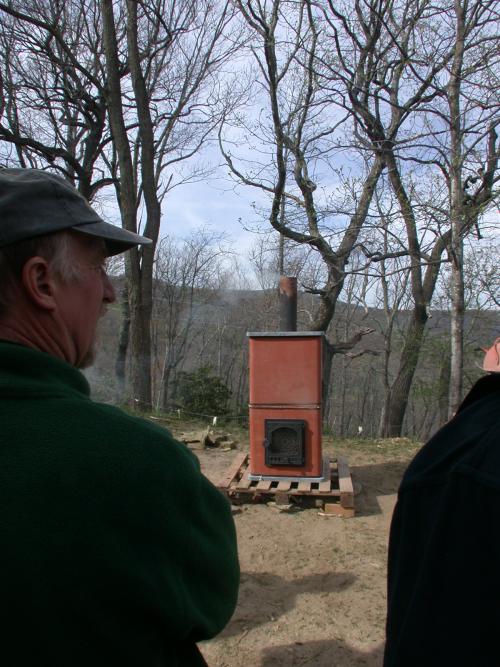
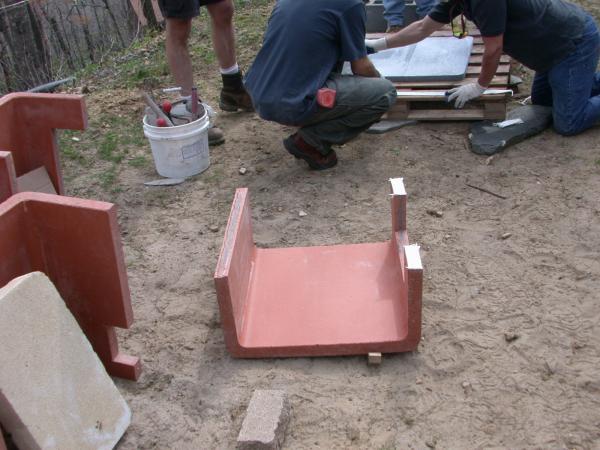
Heater exterior is standard 24" x 24" clay flue liners. To avoid cracking
from uneven expansion from
heat stress, they are sliced in half length wise and reassembled with gaskets.
Fiberglass gasket tape is shown glued in place with GE silicone. Cleanout openings,
etc. are cut
on the gasketed sides, to avoid weakening the intact sides.
Facing shell pieces (flue liners) and pre-cast interior pieces (castable refractory)
First piece is set on a soapstone base. The base could also be precast refractory
concrete.
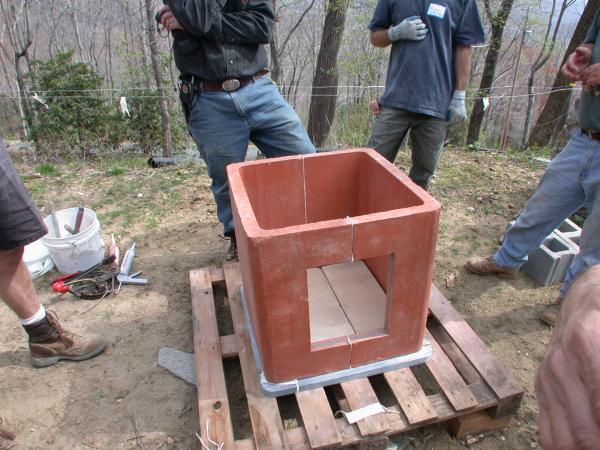
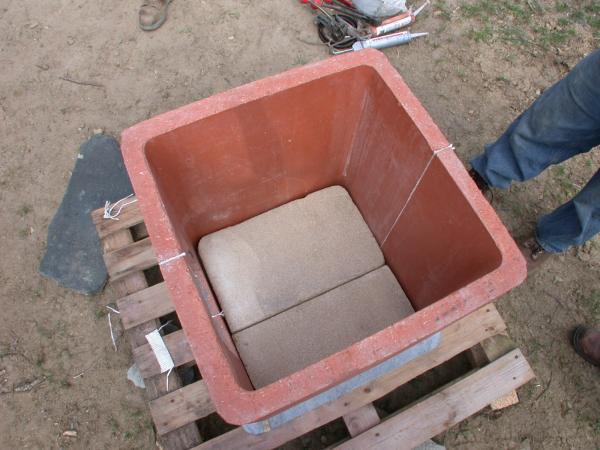
Interior view, showing precast firebox floor support.
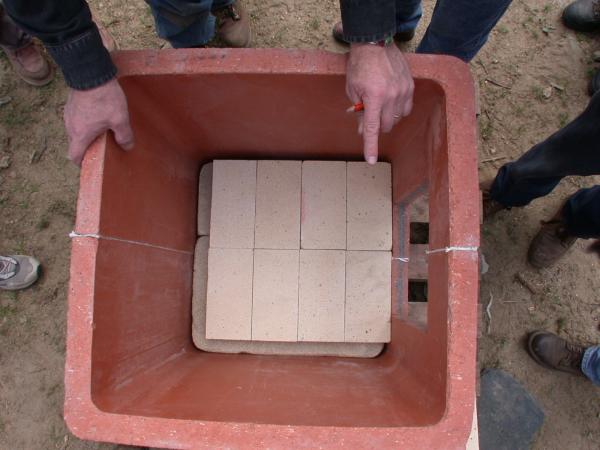
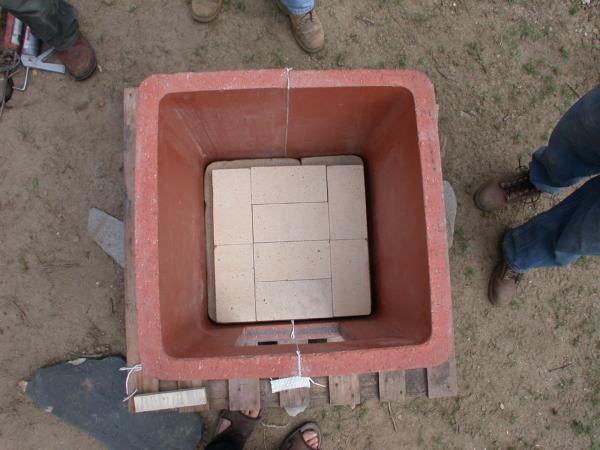
Firebox floor, using standard 4.5" x 9" firebricks.
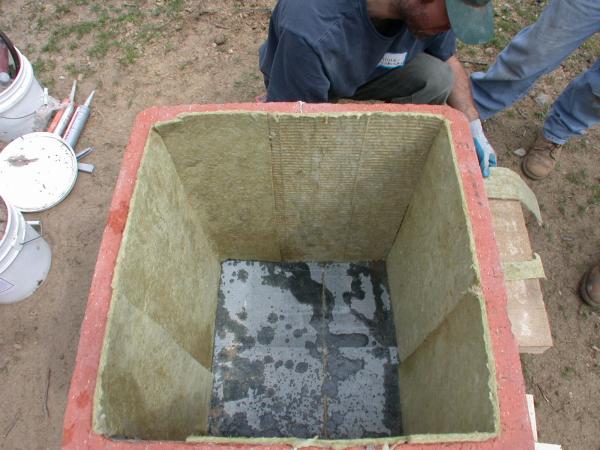
1/4" mineral wool board creates an expansion joint for the interior refractory
work.
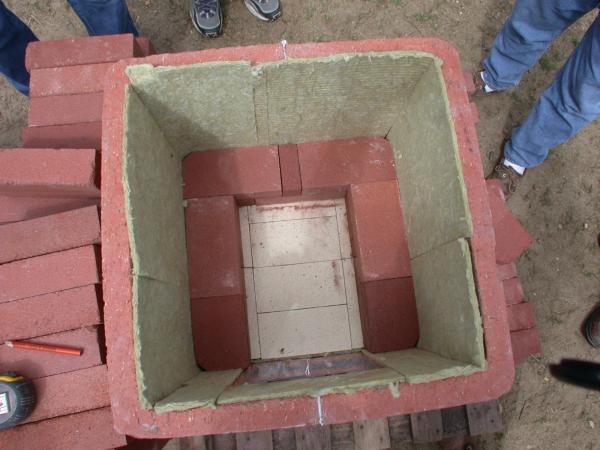
Firebox being built, using red firebricks. Yellow firebricks are more common.
In a permanent installation, the firebricks would be set with refractory mortar.
Here, for demonstration
purposes, they are laid dry.
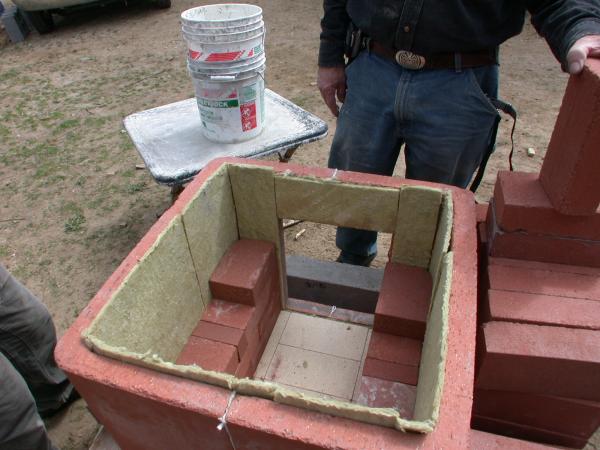
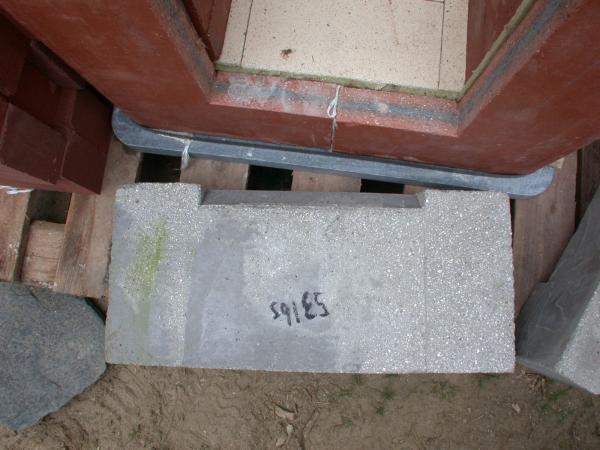
Precast firebox lintel, before installation.
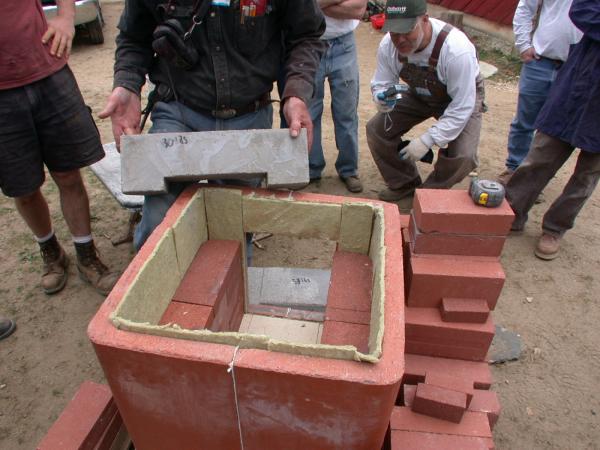
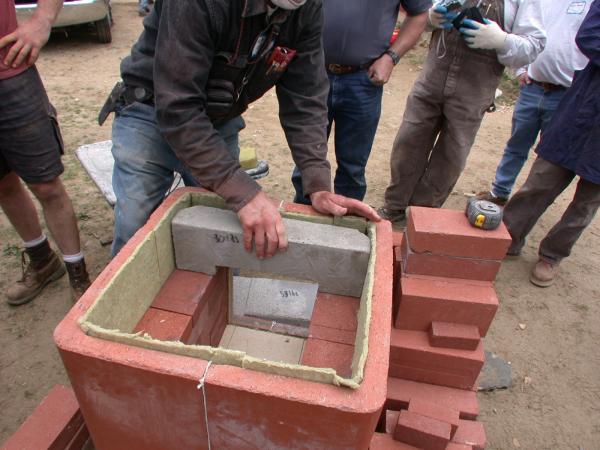
Setting the firebox lintel.
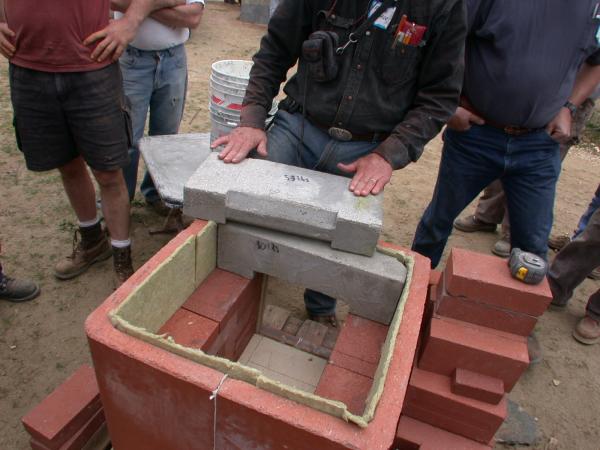
Throat casting
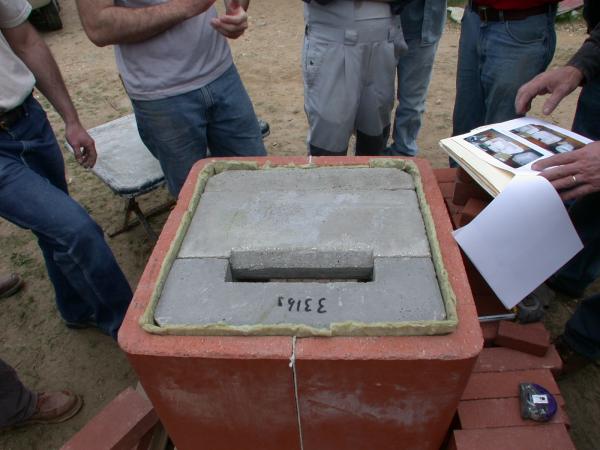
Completed throat.
Second flue liner is set, and lined with mineral wool board. Cutouts are cleanout
openings.
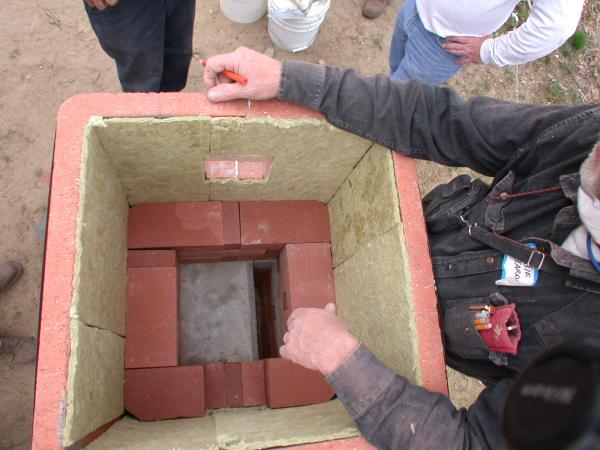
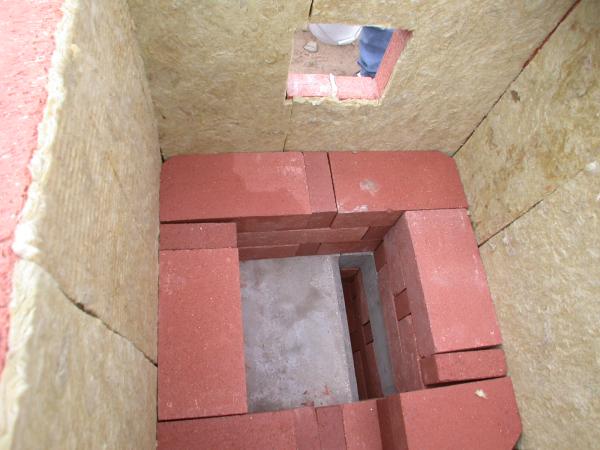
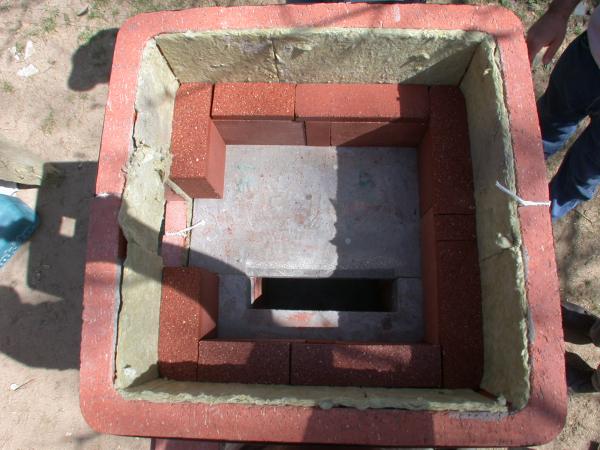
A second set of throat castings has been installed. Note that the firebrick
liner is now thinner
(bricks on edge), because there is less heat downstream from the firebox.
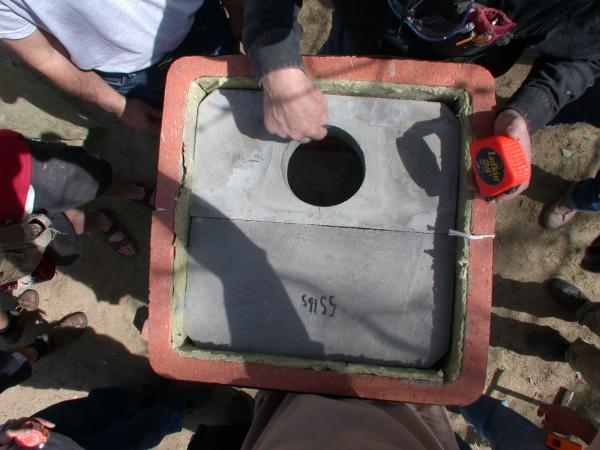
Refractory ceiling with flue outlet.
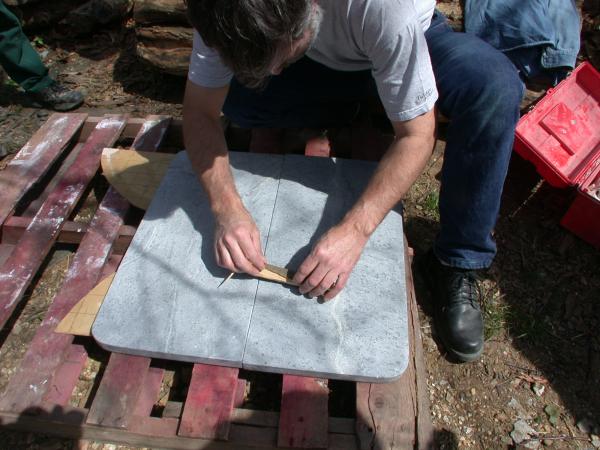
Tim Seaton uses a compass, fabricated from a scrap of wood and two screws, to
scratch a
layout circle on the soapstone capping pieces.
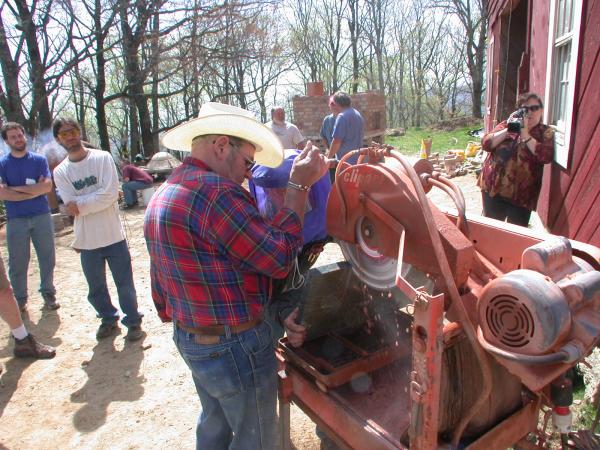
Jerry Frisch helps Albie Barden with the cutting of the semi circles into the
cap pieces.

Finished heater. The loading door and clean outs are siliconed into place. Duct
tape
holds the loading door in place while the silicone cures.
Standard GE clear household silicone (Type 1) will reliably withstand 600F
and
remain flexible. It is identical to more expensive "high temperature"
silicone, except
for the addition of red iron oxide filler.
Note the metal straps that band the flue liners.
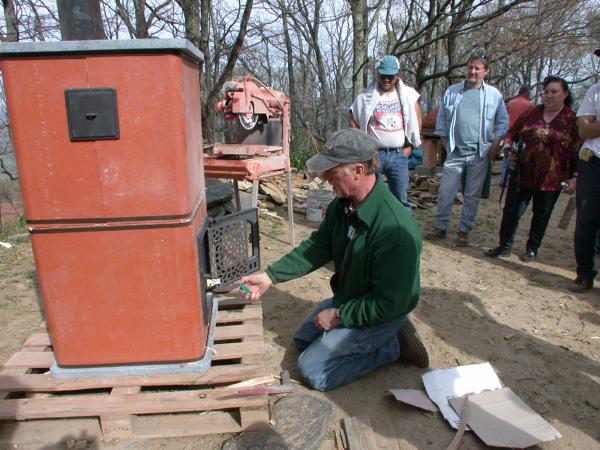
Lighting the first fire.
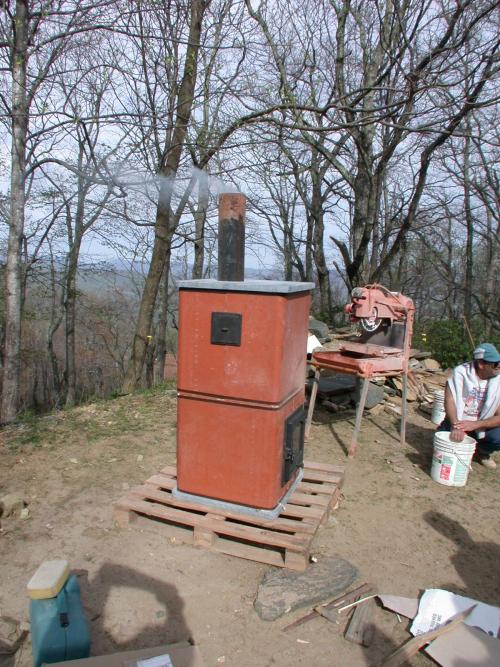
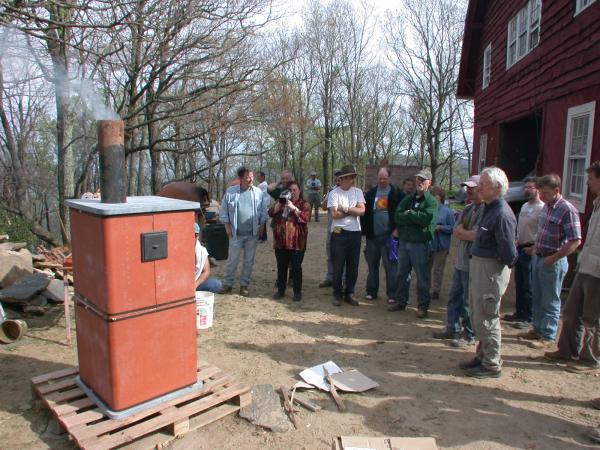
Marge Padgitt videotapes the event.
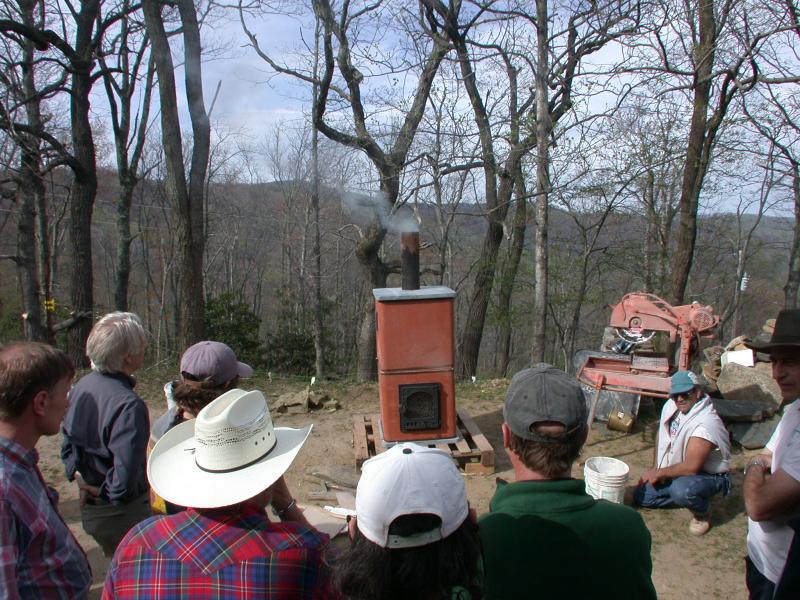
The smoke cleared up as soon as the firebox got hot.

See also,
2003 Photo Report
2002 Photo Report
2001 Photo Report
2000 Photo Report
1999 Photo Report
1998 Photo Report
1997 Photo Report
This page was last updated on
March 17, 2006
This page was created on April 28, 2004